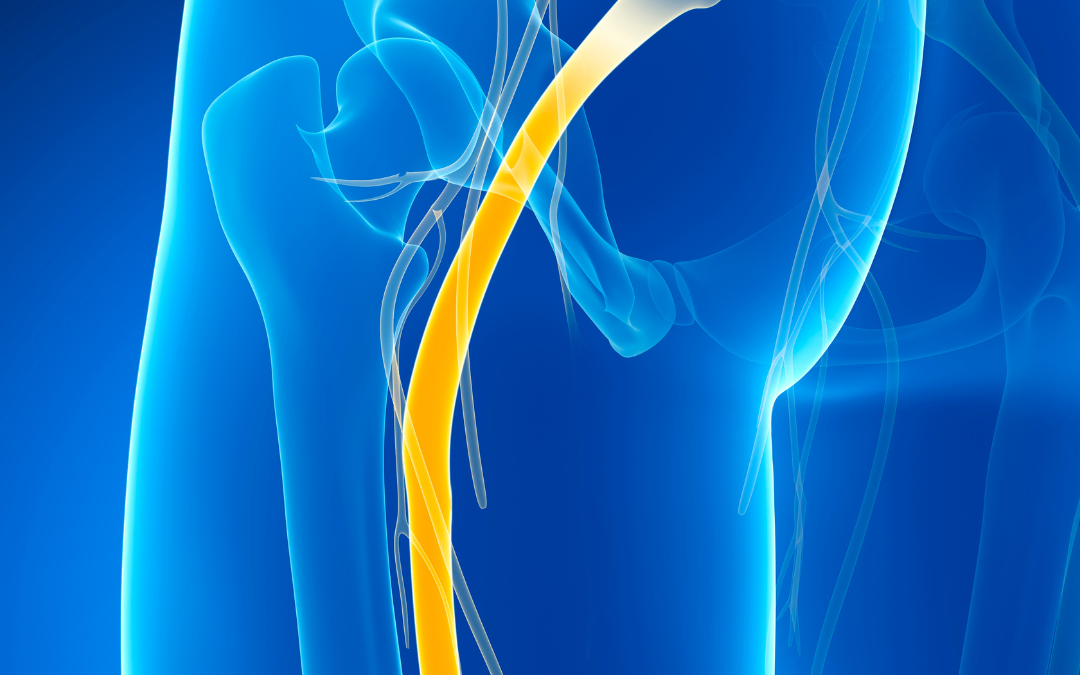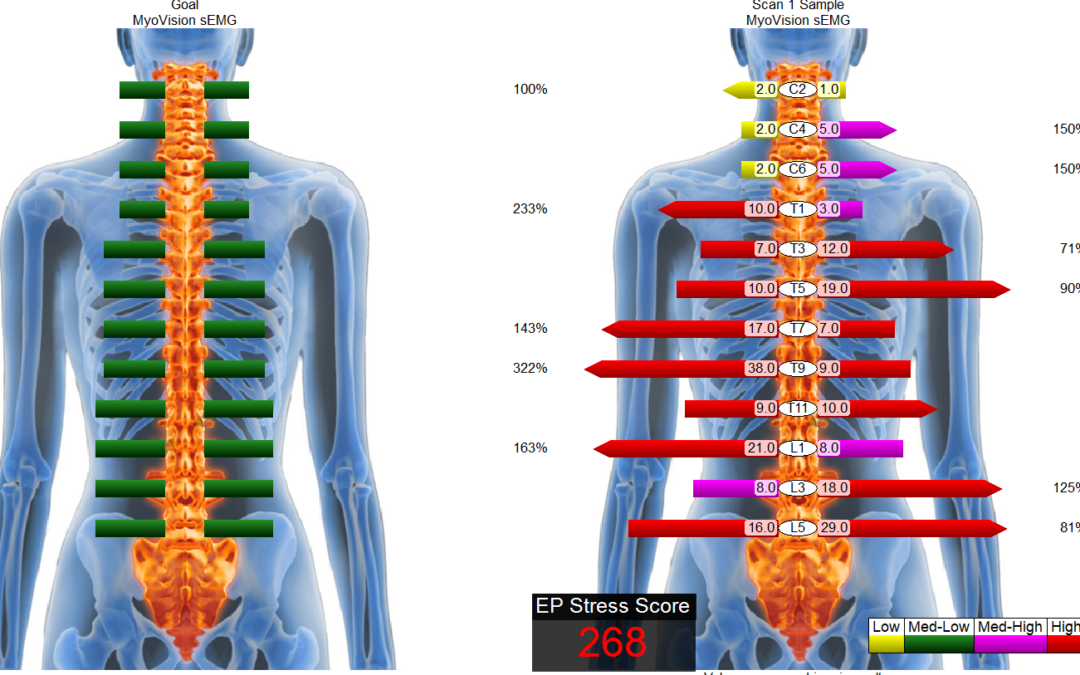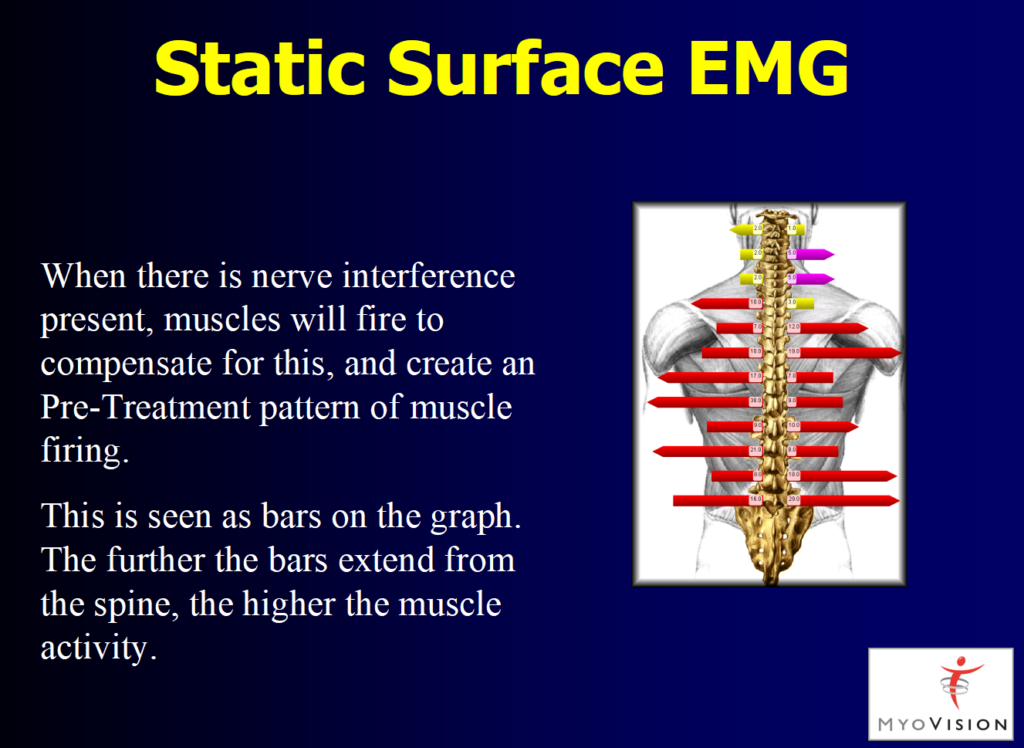
by Dr. David Iacuone | Oct 17, 2024 | Chiropractic In Phoenix, Chiropractor
How Chiropractic Care Can Help with Vertigo
I know it is obvious but vertigo is not fun. It can be a debilitating condition that leaves you feeling dizzy, off-balance, and unable to go about your daily routine. If you’ve ever experienced the sensation that the room is spinning or felt unsteady on your feet, you know how disruptive vertigo can be. Fortunately, chiropractic care offers a natural, non-invasive solution to help manage and even relieve vertigo symptoms.
What Causes Vertigo?
Vertigo can be caused by issues in the inner ear, where balance is regulated. Common conditions that cause vertigo include:
- Benign Paroxysmal Positional Vertigo (BPPV) – is a common inner ear disorder that causes brief episodes of dizziness or vertigo when you change the position of your head. It’s often triggered when tiny calcium crystals in the inner ear become dislodged and interfere with balance signals sent to the brain. Although BPPV can be uncomfortable, it is usually not serious and can often be treated effectively with simple maneuvers to reposition the crystals.
- Inner Ear Infections – Can lead to inflammation of the inner ear causing symptoms such as vertigo and nausea.
- Dehydration – Can lead to a drop in blood pressure and reduced blood flow to the brain. Which then may trigger symptoms of vertigo, including dizziness and balance issues. Staying hydrated is crucial for maintaining proper inner ear function and overall balance.
- Head and Neck Trauma – Trauma can cause an assortment of serious concerns including bleeding in the brain. A consultation with a medical professional may be necessary with head and neck trauma. Once more serious concerns have been ruled out by your medical professional, then we may want to consider the alignment of the cervical spine.
- Misalignments of the neck – Another common source of vertigo is related to misalignments in the spine, particularly in the upper neck region. These misalignments can interfere with the nervous system, which plays a critical role in balance and coordination
What Can I do at home if I am Dizzy?
There are a couple of key things you can do on your own to try and help with vertigo.
- Hydrate – Most people do not drink enough water, and dehydration is an incredibly common cause of vertigo. This is made worse in our dry desert climate in Phoenix. When asked, most patients think they are drinking enough water until they learn how much the human body needs.
Everyone is built differently so 8 glasses of water while a good start is not enough for many of us. The human body needs half its body weight in ounces per day to stay properly hydrated. So evaluate how much water you are drinking and make sure it’s enough. Keep in mind in may take a few days to catch up on your water intake and be fully hydrated.
- Epley’s maneuver – This is a maneuver that can help symptoms related to benign paroxysmal Positional Vertigo (BPPV). The instructions can be found here, and it can easily be done at home. It is helpful at repositioning tiny calcium crystals in your inner ear that can cause dizziness.
The Cervical Spine and Vertigo
The cervical spine plays a vital role in stabilizing the head and keeping our eyes level with the ground. This essential for balance and vestibular function. It allows for wide range of motion, enabling us to scan our environment and interact effectively. The vertebral bodies protect the spinal cord, vertebral arteries, and the muscles of the neck protect other neurovascular structures necessary for sustaining life.
How Can a Chiropractor Help with Vertigo?
At Desert Valley Chiropractic, we specialize in gentle, safe adjustments to the cervical spine. Utilizing the Activator Method Chiropractic Technique is especially effective in addressing misalignments in the upper cervical spine (neck) without twisting popping or cracking your neck. By restoring proper alignment and relieving pressure on the nervous system, chiropractic care can improve balance and reduce dizziness. In fact, many patients report a significant decrease in vertigo episodes after just a few treatments.

Why Choose Desert Valley Chiropractic in Phoenix?
Our clinic is proud to offer personalized, compassionate care for patients suffering from vertigo. We take a holistic approach, addressing the underlying causes of your symptoms to provide long-lasting relief. With over 330 five-star Google reviews and recently being names one of the Top Phoenix Chiropractors, we are a trusted resource for gentle, effective care.
If you’re looking for a Chiropractor in Phoenix to help with vertigo or other balance issues, call us at 602-439-1515 or schedule online here. We offer customized treatment plans to suit your individual needs and help you get back to living a life free from dizziness and discomfort.

by Dr. Katherine | Oct 15, 2024 | biohacks, Chiropractic In Phoenix, Chiropractor, Health, Uncategorized, wellness
How to Get the Most Out of Maintenance Chiropractic Care
You’ve made great strides in your health, and now it’s time to protect that investment with regular chiropractic maintenance care. At Desert Valley Chiropractic in Moon Valley, we believe that maintenance care is crucial for long-term wellness, helping you move better, feel better, and enjoy life to the fullest.
Here are a few tips to make the most out of your chiropractic maintenance care:
1. Don’t Skip Visits
Consistency is key! Pre-scheduling your maintenance care appointments ensures you stay on track. Regular chiropractic adjustments keep your body aligned and help prevent potential setbacks. Set reminders and prioritize your health to maintain the benefits you’ve worked hard to achieve.
2. Move Every Day
Incorporating daily movement into your routine is essential for keeping your body in top condition between visits. A simple 30-minute walk can work wonders in keeping your muscles and joints flexible while supporting spinal health. Daily movement is a great complement to your adjustments and helps you stay active and mobile.
3. Practice Vagus Nerve Exercises
Your nervous system plays a big role in overall health, and vagus nerve exercises can help keep it regulated. Activities like deep breathing, humming, or gargling stimulate the vagus nerve, which helps your body stay balanced. These exercises are simple but effective in promoting nervous system health. Curious about vagus nerve exercises? Check out our blog post on biohacking for more details.
4. Use Ice for Small Inflammations
Small flare-ups or inflammations may happen occasionally, but applying ice can soothe these areas and keep you feeling great. Ice helps reduce swelling and inflammation, making it a simple, effective tool to have on hand. For more tips on when to use ice or heat, check out our helpful guide.
5. Incorporate At-Home Exercises
Staying proactive with nerve flossing and core exercises can make a big difference in maintaining the results of your chiropractic care. These exercises help support your spine and nervous system, prolonging the benefits of your adjustments. Adding just a few minutes of these exercises into your daily routine can boost your overall wellness.
6. Address Flare-Ups Quickly
If you feel any pain or discomfort lasting 24-48 hours between visits, don’t hesitate to call us for an appointment. We recommend catching flare-ups early to get you back on track with your maintenance care plan.
Why Maintenance Care Matters
Regular chiropractic maintenance is the smartest choice for keeping your spine healthy and your body functioning at its best. Whether you’re dealing with past injuries or aiming for long-term wellness, staying consistent with care will help you continue to live pain-free.
Ready to schedule your next visit? Contact the Top Rated Chiropractors in Moon Valley today and let’s keep you moving and feeling great!

by Dr. David Iacuone | Oct 11, 2024 | Chiropractic In Phoenix, Chiropractor, low back pain, sciatica
The Gentle Chiropractic Approach to Sciatica
There can be a gentle Chiropractic approach for Sciatica relief. Unfortunately Sciatica is far too common, and it affects many individuals in North Phoenix. The classic presentation includes pain that radiates from the lower back down one or both legs. Whether it’s due to prolonged sitting, heavy lifting, or even a sudden injury, sciatica can be a debilitating issue that interferes with your daily life. Fortunately, chiropractic care offers a non-invasive, drug-free solution to relieve sciatica pain and restore your quality of life.
What is Sciatica?
The sciatic nerve is the largest nerve in the body, and it can becomes irritated or compressed. This results in sharp pain, tingling, or numbness along the nerve’s pathway. Typically, it will only affect one side of the body, but it can travel down both legs. Sciatica often stems from conditions such as herniated discs, spinal stenosis, joint misalignment or muscle imbalances in the lower back and hips.
How Chiropractic Care Can Help Sciatica?
At Desert Valley Chiropractic, located in the heart of North Phoenix, we understand Sciatica and use gentle chiropractic techniques like the Activator Method to address the root cause of sciatica. Here’s how chiropractic care can help:
-
Relieves Pressure on the Sciatic Nerve
Chiropractic adjustments help realign the spine, reducing pressure on the sciatic nerve and alleviating pain. By targeting the source of the problem, Activator Chiropractic adjustments can improve joint alignment, and reduce inflammation at the nerve root. Less nerve pressure and inflammation will promote healing and provides long-term relief.
Also, adjusting with the Activator Instrument there is no rotation of the patient’s body. This avoids unnecessary torque near the irritated nerve.

-
Improves Mobility
Sciatica can limit your ability to move comfortably, making even simple tasks like walking, sitting or putting on your socks difficult. Chiropractic adjustments help restore normal motion in the spine and joints, allowing you to move freely and with less discomfort. If your spine moves better, you will move better.
-
Reduces Inflammation
Inflammation is often a key factor in sciatica pain. There will always be inflammation at the nerve root (where the nerve exits the spine) putting added pressure on the nerve making the pain worse. Chiropractic care not only helps to reduce this inflammation but also improves nerve function, ensuring that your body can heal properly.
-
Resetting or Co-Activation of The Nerve Fibers
With over 200 research papers published, Chiropractic Adjustment with the Activator Adjusting Instrument have been shown to “reset” the nerve fibers. There is a deep physiological change that occurs in the spinal joint and the nerve to improve function and reduce pain.
Why Choose Chiropractic Care in North Phoenix?
At Desert Valley Chiropractic, we take pride in offering compassionate, expert care for patients suffering from sciatica and other conditions. Our Activator Method ensures safe, gentle adjustments that provide effective relief without the twisting or popping often associated with traditional chiropractic methods. Located conveniently in North Phoenix, we serve the local community with the highest level of care to help you get back to living your life, pain-free.
If you’re experiencing sciatica pain, don’t wait for it to worsen. Schedule an appointment with Desert Valley Chiropractic today and experience the benefits of gentle, effective chiropractic care. Let us help you find relief and improve your overall health and well-being.

by Dr. Katherine | Oct 8, 2024 | Chiropractic In Phoenix, Chiropractor, Health, Injury, Neck Pain, pain
Do You Need X-rays Before Seeing a Chiropractor?
When searching for chiropractic care in North Phoenix, you might wonder if X-rays are necessary before starting treatment. The short answer? Not always! While some chiropractic techniques rely on X-rays to determine the best approach, Desert Valley Chiropractic takes a different route to deliver personalized and effective care.
Why Some Chiropractors Use X-rays
While some experts consider it controversial many chiropractic offices use X-rays to guide manual adjustments. This may help the doctor know exactly where and how to adjust. This is particularly important for techniques that involve rotation or extension of the spine, as these movements can stress the joints if not carefully controlled. X-rays provide a clear view of the spine’s structure, helping chiropractors perform these techniques safely.
However, at Desert Valley Chiropractic, we use Activator Methods—a gentle, low-force technique that doesn’t involve any twisting, popping, or cracking. Because we don’t perform these manual adjustments, we rarely need X-rays to guide our treatments. Instead, we use detailed assessments such as leg checks, segment testing, and MyoVision EMG technology to determine which areas of your spine need attention.
What About Injuries or Underlying Conditions?
Of course, there are still scenarios where X-rays can be beneficial, such as screening for injuries such as a car accident, pathologies, or other underlying conditions. If we believe an X-ray is necessary based on your symptoms, medical history, or response to care, we refer you to a trusted radiology facility. There, a board-certified radiologist will review your films and provide us with a comprehensive report.
The added bonus of this approach is that your X-ray results are stored in a patient portal, making them accessible to your other healthcare providers if needed. This way, you have a thorough record of your health history that goes beyond just your chiropractic visits.
What About the Radiation?
Some patients are concerned about the radiation of an X-ray. Rest assured they are safe. For example, the radiation from a chest X-ray is the equivalent to 10 days outside in the environment. So, if we determine an X-ray is necessary, we will discuss the reasons why and you can breathe easy because they are a sage diagnostic tool.
If You Don’t Use X-ray, What Do You Use?
As mentioned above we use technology called Myovision. MyoVision is an advanced diagnostic tool similar to an EKG for activity of heart Muscle. The Myovision scan provides detailed insights into how your muscles and spine are functioning together. This state-of-the-art technology uses surface electromyography (sEMG) to measure the electrical activity in your muscles. Giving us a real-time snapshot of any areas of muscle tension, imbalance, or stress. The MyoVision scan is quick, non-invasive, and completely safe. Making it an ideal tool to use during your initial exam and throughout your care plan to track your progress.

The data collected by MyoVision along with a physical exam helps us pinpoint problem areas that may not be apparent through traditional assessment methods. By understanding how your muscles are responding to nerve signals, we can fine-tune our treatment approach to ensure that each adjustment is as effective as possible.
At Desert Valley Chiropractic in North Phoenix, we utilize MyoVision technology to complement our Activator Methods technique, allowing us to deliver precise, customized care without the need for X-rays in most cases. This way, you can have confidence that your treatment is guided by the most accurate and up-to-date information available.
Why Choose Desert Valley Chiropractic?
With over 300 five-star Google reviews, we are proud to be one of North Phoenix’s top-rated chiropractic offices. Our patients appreciate the gentle approach of Activator Methods, which has made a life-changing impact on many people dealing with pain and discomfort. Whether you’re dealing with a recent injury, chronic pain, or just looking to maintain your health, we’re here to support your wellness journey.
Ready to experience the Desert Valley difference? Call us today at 602-439-1515 to schedule your first visit!

by Dr. David Iacuone | Aug 6, 2024 | Car Accident, Chiropractic In Phoenix, Injury
So What is Whiplash?
Whiplash is a common yet often misunderstood injury that affects millions of people each year. Statistics suggest that 3 million Americans will suffer with a whiplash injury on an annual basis. The economic burden is substantial and estimated to be 3 billion dollars annually.
Whiplash is an injury to the cervical spine or neck. It is a result of a sudden rapid back-and-forth movement of the neck, like the cracking of a whip. This sudden motion can cause damage to the neck’s muscles, ligaments, and nerves.
A common misunderstanding is that the accident must be severe to have an injury. Not True, A rear end collision of 5mph can cause injury that requires treatment.
While whiplash is most commonly associated with car accidents, particularly rear-end collisions, it can also result from sports injuries, falls, or other traumatic incidents.
How to Diagnose Whiplash?
Proper diagnosis and understanding of an injury is essential to tailor the appropriate treatment. Thankfully diagnosing whiplash is not terribly difficult. To diagnose a whiplash injury your provider should perform the following:
- Review mechanism of the injury – understanding all the facts about the crash is important to determine the status of an injury. For instance, was it a rear end collision, or were you hit from the side. Did your vehicle get pushed into another car, or did it spin after impact? The direction of these forces can have substantial influence on the injuries to the spine.
- A detailed history of all symptoms and how life may have changed after the crash. Are you having trouble performing regular everyday activities at home, or is it more difficult to concentrate at work?
- A complete examination of the areas of complaint including range of motion measurements and a full orthopedic evaluation.
- A Computer Radiographic Mensuration Analysis (CRMA) – This is perhaps the most important step, because it can objectively determine the extent of a spinal injury. A CRMA involves a specific series of X-rays, that include images in flexion and extension. It is followed by a digital measurement of the films. The CRMA measurement will tell us if there is excessive motion of one bone over another, which is necessary to determine:
- The amount of damage done to the supporting structures of the cervical spine.
- The correct approach to your care.
- If the injury related to a car accident will result in permanent damage.
What is Permanent Damage?
If there is excessive motion determined by the CRMA it indicates permanent damage to one or more ligaments supporting the spine. The technical term for this type of ligament laxity is an Alteration of Motion Segment Integrity (AOMSI). Essentially meaning that even after treatment, it is highly probable the injury will flare up from time to time. This can be important information to have when discussing your injury with the insurance companies or potentially attorneys.
If you or someone you know has been in a recent car accident and there are concerns about injury, Desert Valley Chiropractic may be able to help. We will sit with you and take the time to review all the factors around your crash and determine if we can help. Please call us at 602-439-1515 to schedule a consultation.

by Dr. David Iacuone | Aug 3, 2024 | Chiropractic In Phoenix, Exercise, Health, Injury, pain, wellness
Chiropractic Care for CrossFit Enthusiasts
Chiropractic care has been helping CrossFit enthusiasts maximize performance and minimize injuries for a long time. CrossFit is an intense workout regime embraced by over 5 million people each year. Given its demanding nature, many CrossFitters, who often have sedentary jobs, find themselves prone to injuries. However, these injuries are not inevitable. Incorporating stretches, foam rolling, and other mobility exercises into your routine can significantly reduce the risk of injury. Additionally, chiropractic care offers numerous benefits for CrossFitters, enhancing their performance and overall well-being.
Chiropractic Care and Injury Prevention
CrossFit workouts involve high-intensity movements that can strain muscles and joints. Regular chiropractic adjustments help maintain proper alignment of the spine and joints, reducing injury risks during workouts. Poor form during lifts and exercises is a primary cause of injuries. Misaligned joints can lead to unintended poor form. Chiropractic care enhances joint function, increases range of motion, and improves form, thereby preventing injuries.
Get the Most out of your Workout
Proper joint alignment and function improves biomechanics of the spine or other effected joints. Improved mechanics allow you to get the most out of your workout, including more intense Crossfit workouts. When the body is in alignment, muscles function optimally, allowing athletes to generate more power and strength.

Recovery, Recovery, Recovery!!
CrossFit workouts can be intense, often resulting in muscle soreness and fatigue. Being in optimal alignment with Chiropractic adjustments will promote faster recovery by reducing inflammation, improving blood flow and aiding the body’s natural healing processes. The better your recover, the more you can perform on your next workout.
Enhanced Range of Motion
Flexibility and range of motion are crucial in all aspects of life, including CrossFit. It is important to have smooth movements to aid with proper form and technique. Chiropractic care improves joint function and reduces muscle restrictions, helping CrossFitters move more freely and efficiently. Given how much time we spend sedentary in front of a computer with poor posture, achieving full range of motion when starting to work out can be challenging. Regular chiropractic visits can significantly improve this.
Individualized Treatment
Chiropractors tailor treatment plans to meet each patient’s specific needs, addressing underlying issues or imbalances affecting performance or predisposing them to injury. At Desert Valley Chiropractic, we utilize a very specific chiropractic technique that not help us to improve the mechanics of your spine, but also extremities like your knee’s, hips, shoulders, and wrist.


Pro Tips
Prior to any big workout including CrossFit it can be beneficial to warm up your core. Core engagement is critical to preventing significant injury during a workout. If we engage the core for a few minutes prior to a workout, it will be there to support us when we need it. Plus, it can help with your form, especially with more intense movements.
Also, don’t forget to stretch after the workout. You have spent all that time working your muscles, shortening them and putting stress on the surrounding joints. Take the time to lengthen those muscles after your work out. They’re already warmed up, they’ll have good blood supply and post workout stretching has been shown to reduce soreness and speed up recovery.
Overall, chiropractic care supports the health and performance of CrossFit athletes by addressing musculoskeletal issues, promoting better range of motion, optimizing overall function and faster recovery. It’s essential for athletes to work with qualified chiropractors who understand the unique demands of CrossFit training. At Desert Valley Chiropractic, we are dedicated to providing expert care to help you achieve your fitness goals safely and effectively.












